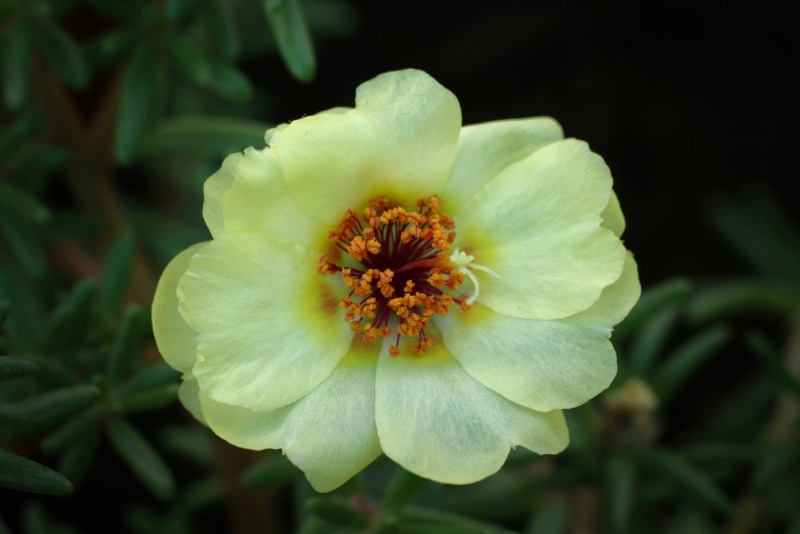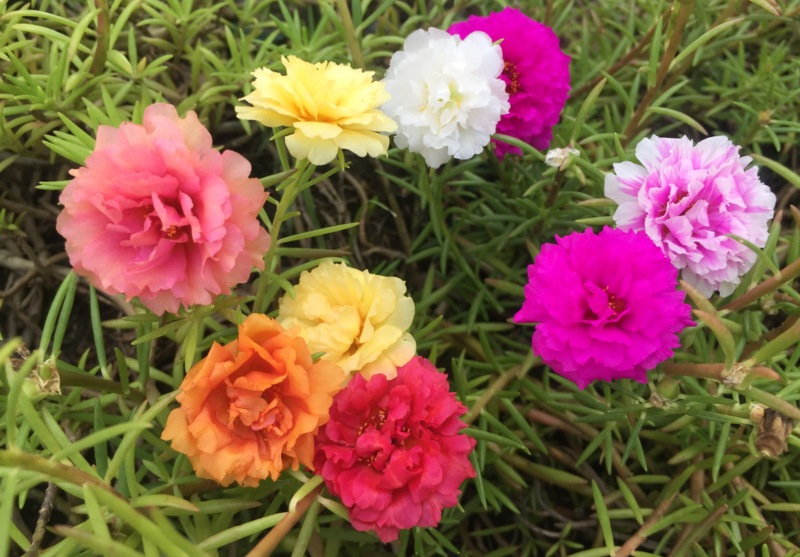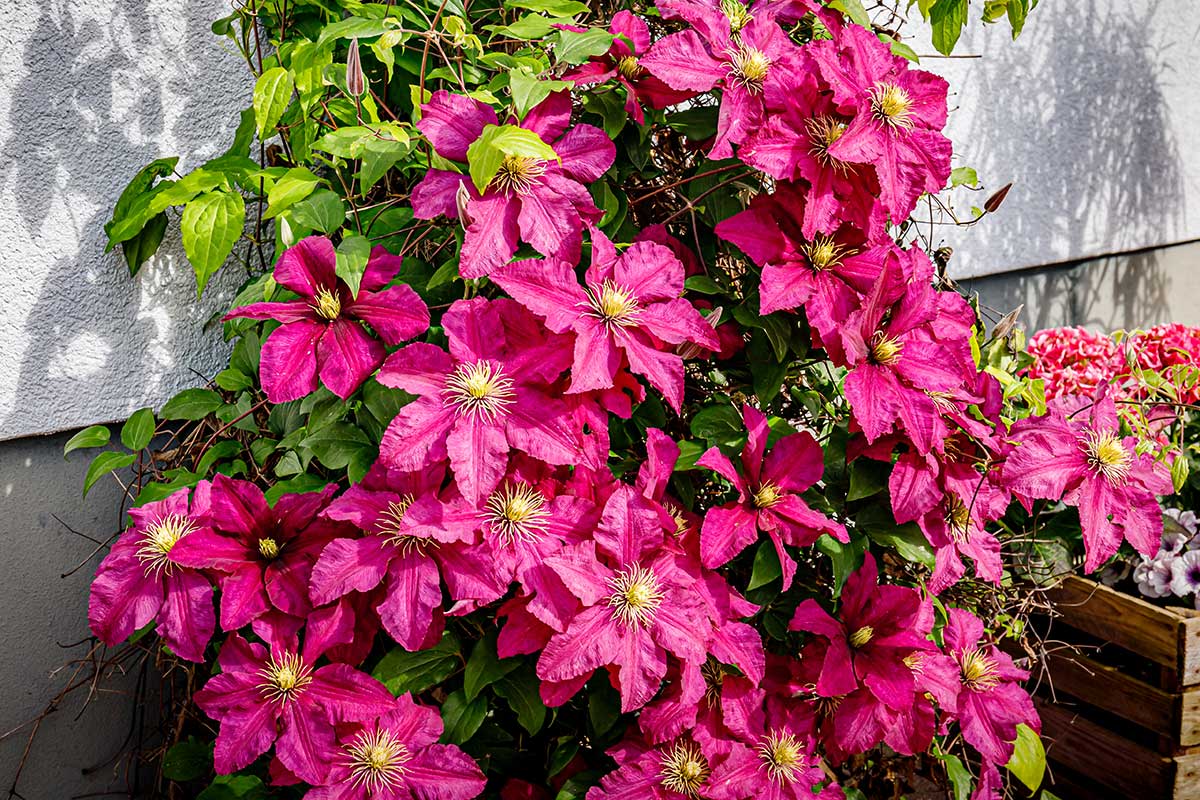
Portulaca plants are a uniquely tough flowering plant in many species and spread across a diverse range of growing zones. In this article, we’re going to discuss some of the most popular of these species, describing their general overall appearance and a few growing tips for each plant.
Go through each of these listings to find a portulaca that meets your needs as a grower, pin-pointing what grows the easiest in your temperature range and which is within your skills as a gardener.
Sundance — A Gorgeous Orange Variety

Although many portulaca species have yellow or white flowers, the sundance produces a gorgeous scarlet orange that is eye-catching. However, you can also get colors in pink and red, providing a large variety of different possibilities. Expect flowers to grow between 2-3 inches. As a primarily warm-weather plant, you will see it thrive mainly in summer and warmer temperature zones.
Growing Tips: Grow this plant in full sun in well-drained soil when night temperatures rise above the frost zone. You’ll need to provide the equivalent of at least one inch of rainwater to this plant every week. You’ll need a rain gauge and a careful measuring tool to provide this level of water in low-precipitation areas.
Portulaca Umbraticola — A Common Perennial

Although some gardeners consider uncultivated varieties of this flower a weed, it can be grown as an ornamental plant with a little work. It is a very low-maintenance variety, meaning you’ll have to do very little to keep it strong. Expect it to grow anywhere between two and 10 inches or so, with the flower around half-an-inch in size. Anticipate yellow flowers that attract bees and which flourish well in growing zones between 7b to 11.
Growing Tips: Use well-drained sandy soil for this plant to get the best results. Ensure that you place them within full sunlight to grow them as broadly as possible and use relatively light watering, keeping the soil damp but not exactly drenched.
Common Purslane — Annual Summer Plant

If you want a plant that grows well in the summer, this is your portulaca of choice. It proliferates in flower beds, between cracks of concrete, and has flowers between one-quarter to one and one-quarter inches long. Stems are around 20 inches or so, making this a relatively large plant. Anticipate yellow flowers with five petals. As a tough plant, you can expect it to grow in most types of areas, though you should make sure to trim it regularly to avoid the risk of excessive spread.
Growing Tips: Try to grow this plant in very rich and thick soil, in areas where you may not grow other plants. Keep the soil warm with direct sunlight and water it just enough to keep the soil damp. Remember that this flower has the potential to become a weed without careful management.
Sundial — A Vibrant Option

Gardeners who want a variety of different plant colors often turn to the sundial. Known as a ground-hugging and leafy plant, it produces red, pink, yellow, orange, and sometimes even purple flowers. As a very hardy plant, it does well in cloudy and cool weather. This factor separates it a bit from other portulaca. Anticipate blooms throughout most of the growing season, with about three-inch flowers.
Growing Tips: Place in moist and rich soil and give it plenty of sunlight until the flowers bloom. Allow a little darkness at night to keep the plants from getting too much sun. And give them at least one-inch of water every week, relying either on rain or watering to handle this need for your plant.
Calypso — An Artificial Variety

Plant growers are skilled at producing a surprising range of artificial flowers, such as the calypso variety of portulaca. Designed to grow up to 12-15 inches in height, it creates a range of orange, pink, yellow, and red colors common to many portulacas. It was designed to be a more colorful plant, with its weed characteristics minimized. As a result, it doesn’t grow as fast as other portulaca.
Growing Tips: Created to be a hardy plant, it should do well in well-drained soil in direct sunlight for as long as possible every day. The ground needs to be moderately moist, making this a plant that is a little tougher to maintain than other portulaca. It may need two inches of water throughout a week, depending on its size and needs.
Moss Rose — The Most Common Garden Portulaca

Moss Rose is likely the most popular of all portulaca because it is very hardy, capable of growing in arid areas, and has small but pretty plants that don’t require a lot of maintenance. Expect many very bright colors, including white, orange, yellow, pink, and red. Though it grows best in the summer, it is very hardy and can bloom between early summer to frost times, thriving in zones 2 to 11.
Growth Tips: To get this plant to reach its 3-9 inch height and 6-12 inch width, keep it in full sunlight and in just about any soil. Moss Rose will thrive in very nutrient-poor and dry soils, making them an excellent option for those areas where you’ve grown too many plants over the years.
Yellow Purslane — A Popular Tropical Variety

In areas with tropical temperature levels, this plant is probably the best choice. It is very heat tolerant and capable of going a surprisingly long time without needing a lot of watering. They produce large yellow flowers during the summer and can grow about 4-8 inches in height and 12-16 inches in width, producing a relatively large coverage area in a reasonably short period.
Growing Tips: Place this plant in poor to average soil and give it full sun to produce the best results. It grows best in 10a to 11b growing zones, typically needing a lot of heat to stay in bloom. Expect the flowers to go out of bloom with the first frost and stay that way until summer.



